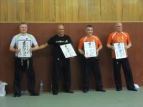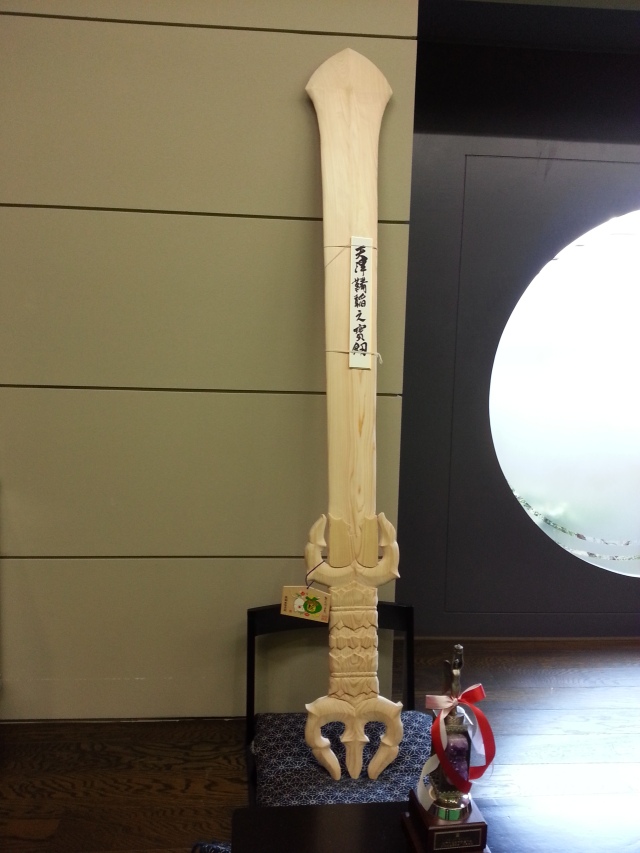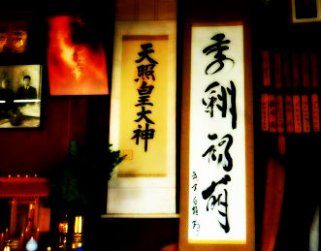Mushin Mukô: no Thinking, no Form
From Shiro Kuma's Weblog by kumablog
During the last class, sensei wrote a calligraphy (see picture) saying: 無心 無光, Mushin Mukô (no thinking, no form). It reminded me of Musashi’s 得光, 無光, Ukô Mukô, (with form, without form). Musashi explains that the concept of Kamae is complex as it mixes both the physical and the mental attitudes. He said that Kamae is “not only a physical stance, but varies according to situation, like the shape of water in various vessels. The physical kamae is like a castle but needs a capable Lord within”. I like this image.
Sensei’s Budô is formless and this is what gives it so much power and that is triggering our creativity. There are no preconceived action and no intention. But this is a very high level of expertise and not so many Bujinkan practitioners can even grasp the idea. Needless to say can do it.
In order to reach this level, one must first master the basics and the various Bujinkan fighting systems. This ability of Mushin Mukô appears when your saino konki develops itself enough within the Juppô Sesshô.
Juppô Sesshô by essence cannot tolerate forms nor shapes as it is a natural reaction to a mienai (invisible) situation. Forms and shapes gives you away and might reveal your intentions to the opponent. If you are able to be Mushin Mukô in the fight your body will simply react with adequacy . The outcome is not important. You move naturally, simply surfing the waves of intention of your opponent.
This is why I consider the study of the Tsurugi to be so interesting. The Tsurugi becomes alive because you have mastered the traditional “modern” forms of sword fighting (in the Bujinkan they are to be studied in the kukishin, the togakure, the shotô, the tachi).
Strangely we use an old weapon fighting system through the understanding of its modern evolution. Remember that the Tsurugi has been in use until nearly the end of the Heian Jidai (794–1185)*. Which means that Tsurugi techniques have been used for at least 35 centuries (including China). Comparatively the Tachi and then the katana have been in use for less than 8 centuries of actual warfare (10th to 18th c).
But as sensei explained the written techniques have disappeared (bamboo blades and paper didn’t make it through time) and only the body can recreate the techniques. Now as the Tsurugi created the tachi and the tachi created the katana, then by learning the relatively “modern” ways of tachi and katana, can we rediscover the old fighting experience of our ancestors. I write “ancestors” because the whole world: the Indians, the Romans, the Greeks and the Vikings used the same straight type of blade.
By showing the Tsurugi this year Hatsumi sensei had given us the best tool to get rid of the form. Fighting is about surviving not about looking good. If you know the forms good enough then the Tsurugi will free your taijutsu. But sensei prepared us for this. We studied the sword b going back into time: first ith the Kukishin biken jutsu, then the shotô**, then the togakure sword, then the tachi***. In fact we have been studying sword from modern times going back into the Tsurugi period.
Once understood this concept of 無心 無光, Mushin Mukô (no thinking, no form) with the sword, you can apply it to any type of fighting from taijutsu to any weapon. This is why the Tsurugi is so difficult to understand.
And this is the beauty of the Juppô Sesshô of the Bujinkan martial arts taught by Hatsumi sensei.
__________________________________
* Middle Heian – Early Kamakura Period (9th – Middle 12th C.) An important step in the construction of sword was taken when Japanese swordsmiths came to produce a curved-blade of Shinogi-zukuri, that is considered to have innovated from the experience of wars occurred in succession at the turn of the 10th century. The swords of this age are marked with gracefulness. The shape is slender with strong Koshi-zori (waist-curve), the foible curving inward, and the blade tapers toward the Kissaki with the ratio of width of the ricasso (the base of the blade) to that of the top is as 10 to 5.5 or 6, proving to be an effective weapon to make a blow and to aim toward enemy’s throat from the horseback. In appreciation, those features, needless to say, added effect of beauty on sword as artistic asset. From http://www.shibuiswords.com/historynihonto.htm
* * for those interested, when we studied the shotô in 2003, sensei said that these techniques were coming from a fighting system of the Muromachi period that specialized in small swords to fight the huge tachi in use at this time. In this Ryû, they would carry the shotô on the thigh like a tachi (cutting edge down) with the same type of mounting. I am sorry but I don’t remember the name of the Ryû (it is not one if the 9 schools).
*** for those interested, I will give a one week seminar mid August and we will study all the sword techniques from the Bujinkan: kukishin biken, togakure biken, shotô jutsu, tachi waza, and Tsurugi. You can see all the details at http://bujinacademy.isteaching.com/shugyo-seminar-summer-2013.html










